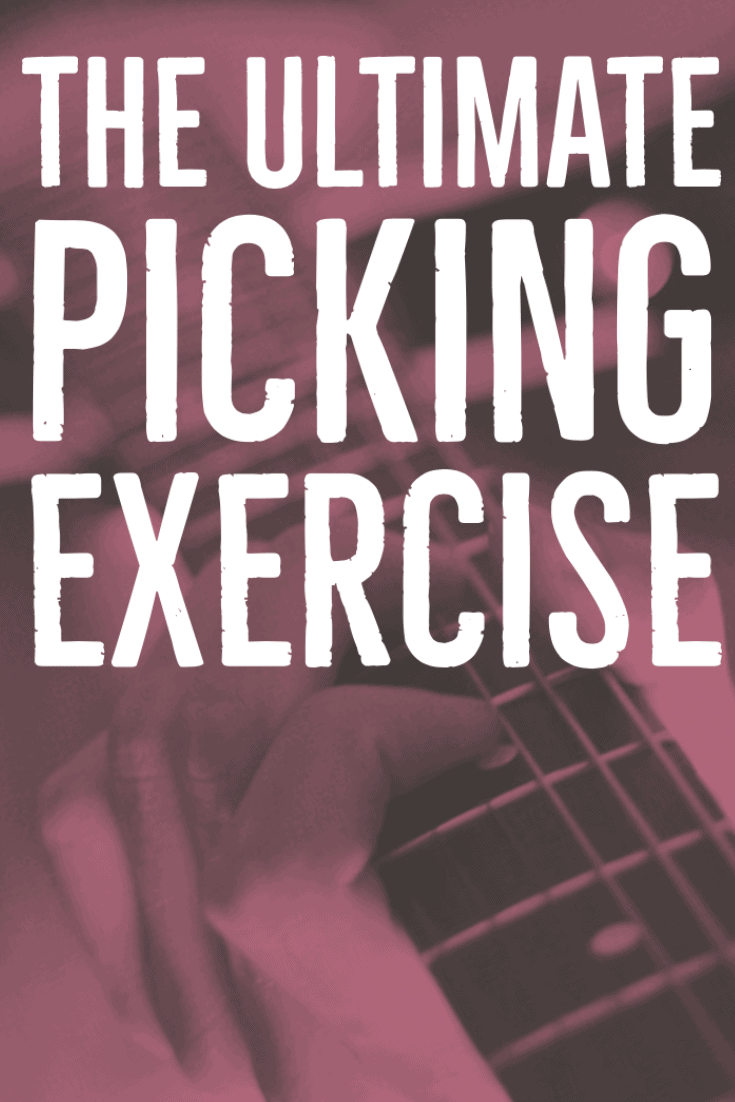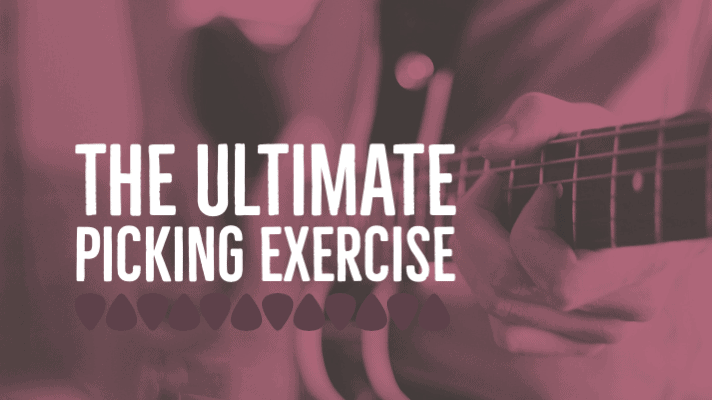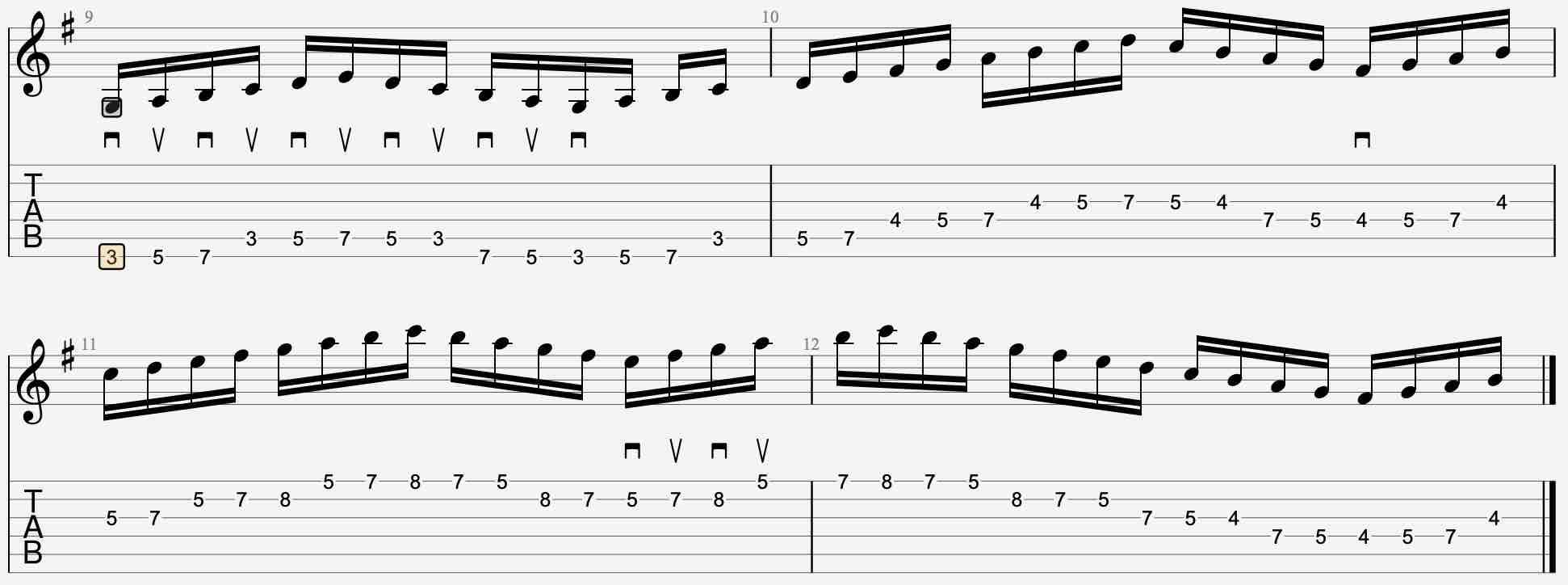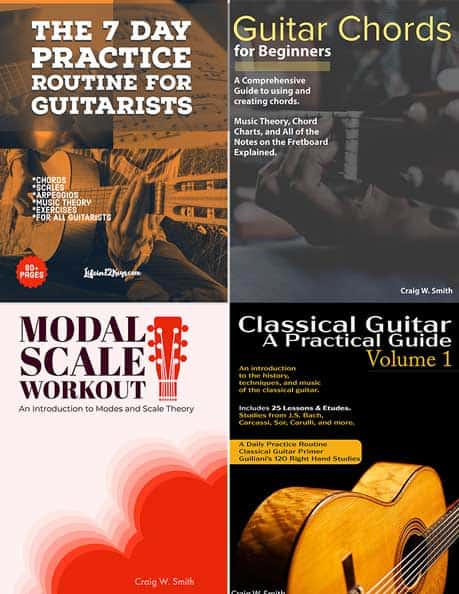The Ultimate Picking Exercise? Really? There are tons of excellent alternate picking exercises out there for guitarists. What makes this one different?
Well for one thing, I know this one works. It’s worked for me and countless students, some of whom have gone on to prodigious levels of guitar picking prowess. Let me be clear; it’s not just about speed. Speed is a by-product of good technique and can vary wildly between even the best guitarists out there.
Alternate picking has a sound and tonal quality that makes the unique sounds of the guitar so… guitar-like. It’s an aggressive, focused sound you just can’t get with sweep or economy picking. It’s a textural assault on the senses when done well.
At the bottom of the page you can grab a free print-friendly PDF copy of 'The Ultimate Picking Exercise’.
Warning: This picking exercise is a bit more on the advanced side and requires some knowledge of modal scales and basic fretboard mechanics. Proceed with caution and possible shredding.
Alternate picking is endlessly useful and rewarding in any style of guitar music you choose to pursue. These types of alternate picking exercises are perfect for practice in front of the TV or warming up before a gig or studio session. Picking exercises that have a defined beginning and ending. That is so important.
Your guitar practice time should have a beginning and an end. Endless noodling can sometimes do more harm than good. This exercise is a carefully planned sequence of ideas that tie together diatonic scales in a key that just makes sense for guitar solos and improvisation.
Introduction
I’ve had an interesting summer. I bet you have too. The COVID-19 stuff has really changed the fabric of our day-to-day lives. The negative effects are as prevalent to guitarists and other musicians as they are to just about any other line of work or hobby I can think of excluding first responders and Health Care professionals.
In late March all of my live guitar work kind of went down the tubes. I’ve done more writing in the past two months than I have in two years. In April, I started writing an ambitious Classical Guitar book which has been very well received and I’m very proud of it.
The by-product of spending two straight months on Classical Guitar music was the negative affects on my alternate picking technique. Let me be clear, playing classical guitar doesn’t hurt your picking technique, but the fact is, I just wasn’t working on my alternate picking because I was so into the classical guitar music from that book.
Fast forward a month or so and I started another book. The Modal Scale Workout was a pet project of mine that I had shared with my students to help with their own alternate picking problems. This second book in three months resulted in a complete change in focus from finger-style to alternate picking again.
To say these exercises work is an understatement. Within two weeks I was back to my old self and playing as well as I ever could previously. After writing several versions of this (soon to be published in the print version of the Modal Scale Workout), I finally settled on this Ultimate Alternate Picking Exercise.
I know it’s a bit on the advanced side and I’ve promised my readers some more beginner guitar lessons coming up soon. I will keep that promise. For the rest of you, let’s get to it!
All you need is a guitar, a metronome, your pick of choice, and an hour or two to kill… I lovingly call this one, 'The Whole Enchilada'. –Enjoy!
Craig Smith - Guitarist & Author
The Modal Shapes
For all of the picking sequences below we’re going to focus in on the first mode in the key of G Major: G Ionian. Later in the exercise, the Dorian mode will be added.
Keep in mind, The Ultimate Picking Exercise is written for this one modal shape only. Once you’re familiar with it in Ionian, it will be easy to move it into the other 6 modal shapes using the same picking patterns and sequencing.
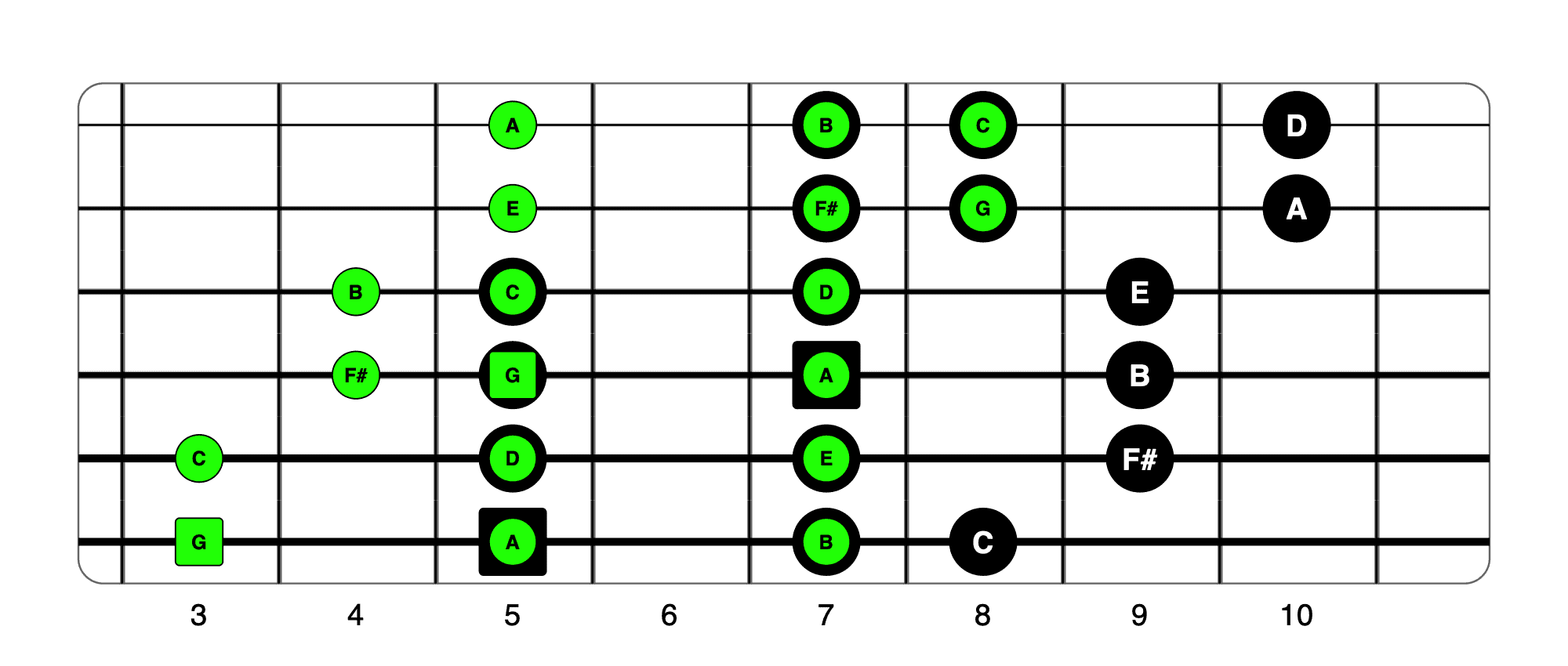
The Ultimate Picking Exercise

Straight Alternate Picking
Straight alternate picking through the 3 note-per-string G ionian scale. Nothing complicated in this first example. We are simply alternating strokes through each note of the scale ascending and descending.
A common mistake among guitar students; Somewhere along the line, either when crossing strings, or in the turnaround descending, often times I see a double downstroke in there. Always alternate your picking strokes. Pay close attention to your picking hand the first few times through.


Alternate Picking String Groupings
Here we're winding our way up through the G ionian scale shape in groups of 2 and 4 string sequences.
This is a great multi-directional exercise that also helps to memorize the scale shape if it happens to be new to you. As always, pay close attention to your pick direction when crossing strings.

Alternate Picking in Diatonic 3rds
This next sequence can be a bit tricky at first. Here we are picking our way through the scale in diatonic thirds. Starting on the G note, skip A, pick B, pick A, skip B, and so on, through the Ionian scale. Diatonic 3rds means we always play a Major or minor 3rd interval but within the confines of the scale tones.
As with any of the alternate picking sequences in this exercise, you could also start on an upstroke to further develop your alternate picking. It may not be as practical or comfortable for everyday playing situations, but it does help fluidity in the picking hand.
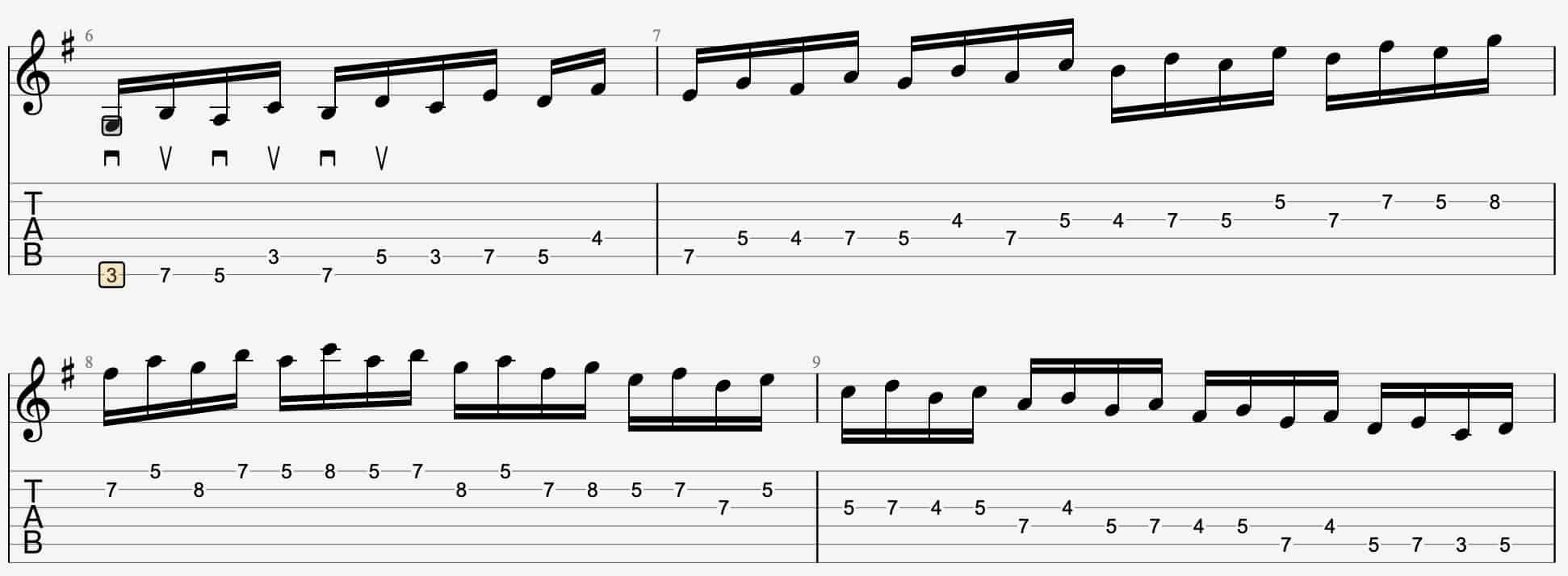
Alternate Picking: Arm or Wrist?
"Does it matter? I don't think so, and with good reason. Some of my favorite guitarists including those with stellar alternate picking technique, will often do both.
Paul Gilbert has a wonderful wrist technique, probably due to his large hands and long arms. My all-time favorite guitarist, Al Di Meola, will use a wrist technique for string crossings through chord voicings, switching to tight, locked elbow arm movements at higher speeds.
You should do what is comfortable for YOU. If it sounds good, it IS good."

Alternate Picking in Fours
Yes, I meant ‘fours’ not 4ths. In this sequence we are playing 4 notes in order from the root (G). Then starting on the next note (A), playing 4 more notes up and eventually back down the scale.
I think it’s safe to say, this exercise is a bit more comfortable than 3rds for most guitarists. It’s also a familiar sounding pattern that you’ve probably heard in lots of Rock, Metal, and Progressive guitar music.


The Up 4 & Back Sequence
This exercise, (or some variation of it), has been a staple in alternate picking instructional materials for over 30 years. Paul Gilbert taught a similar exercise when he was a guitar instructor at G.I.T at the Musicians institute in Hollywood, CA. Paul also included it in his first instructional video in 1987.
Over the years, I’ve heard this lick pop up in various forms from a few different guitarists, all of whom have one thing in common; excellent alternate picking technique. The earliest forms I’ve heard were recorded by Al Di Meola in the early 1970s on the first few Return to Forever records.

I’ve taken this basic two-string concept of outside alternate picking, and arranged through string pairs using the whole scale. I like to practice it this way because it gets my pick used to all of the pairs of strings rather than just the high strings (like the Gilbert version).
This one may take some getting used to but it is well worth the effort!
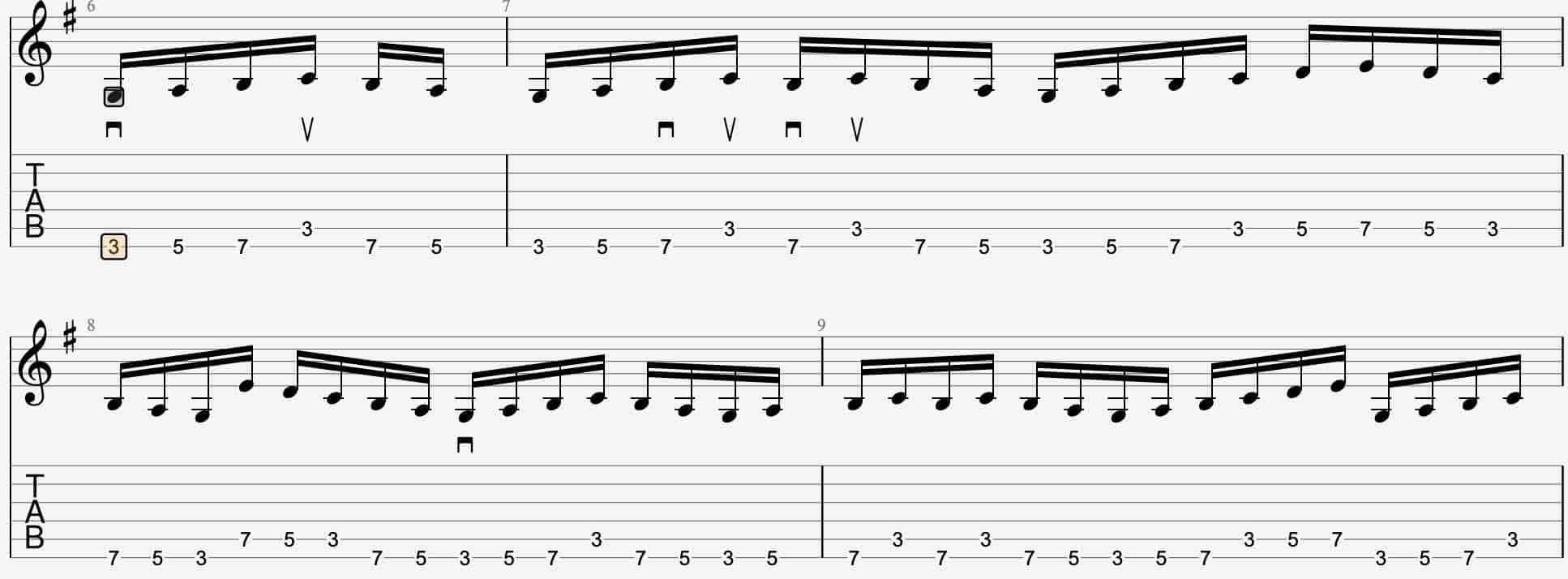

Picking Diatonic Arpeggios
In some of my past lessons, including The Modal Workout where I outlined a similar exercise, I’ve stated that this is one of my favorite sequences. It is one which I use myself in my own improvisations and the one that I feel is the most musical of the sequences in this Ultimate Picking Exercise.
There are many ways in which we can incorporate arpeggios into our playing. I like ‘finding’ them within a shape I’m already familiar with. Without leaving the Ionian shape, we can find all of the arpeggios in the key of G Major including:
GMaj7, Bm7, CMaj7,Em7, F#m7b5, Am7, Bm7, D7.
Yes, they are out of order, however, once you start the sequence you’ll see why. I’ve created a simple pattern that repeats across three strings moving in diatonic 3rds and 4ths ascending through the scale. It’s a neat way to wind through the scale without it really sounding like a scale at all.
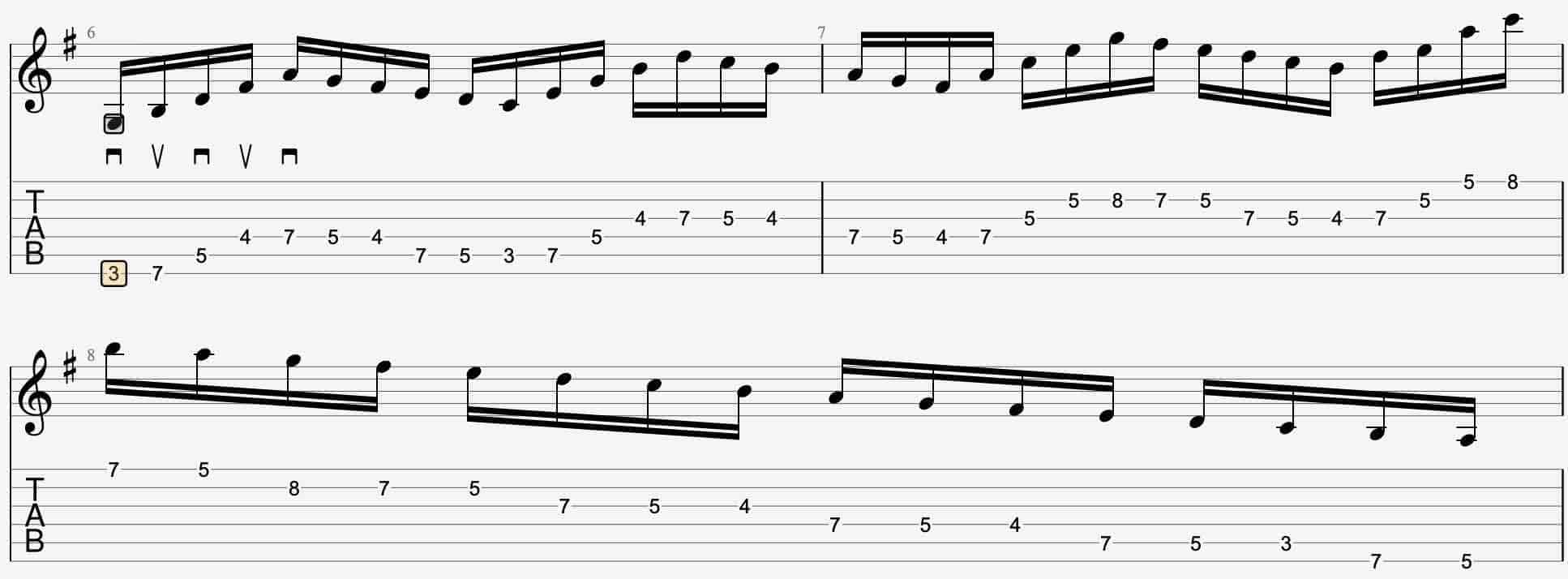

'Double' Arpeggios
This next picking sequence is similar to the previous. The difference is that I start a new arpeggio on the pinky note of each string. This ‘doubles’ up the number of arpeggios played in each modal scale.
The fun really starts when you apply this pattern to the modes that follow in the key of G. You’ll find the same arpeggios and similar fingerings, but in a different order each time. Cool!
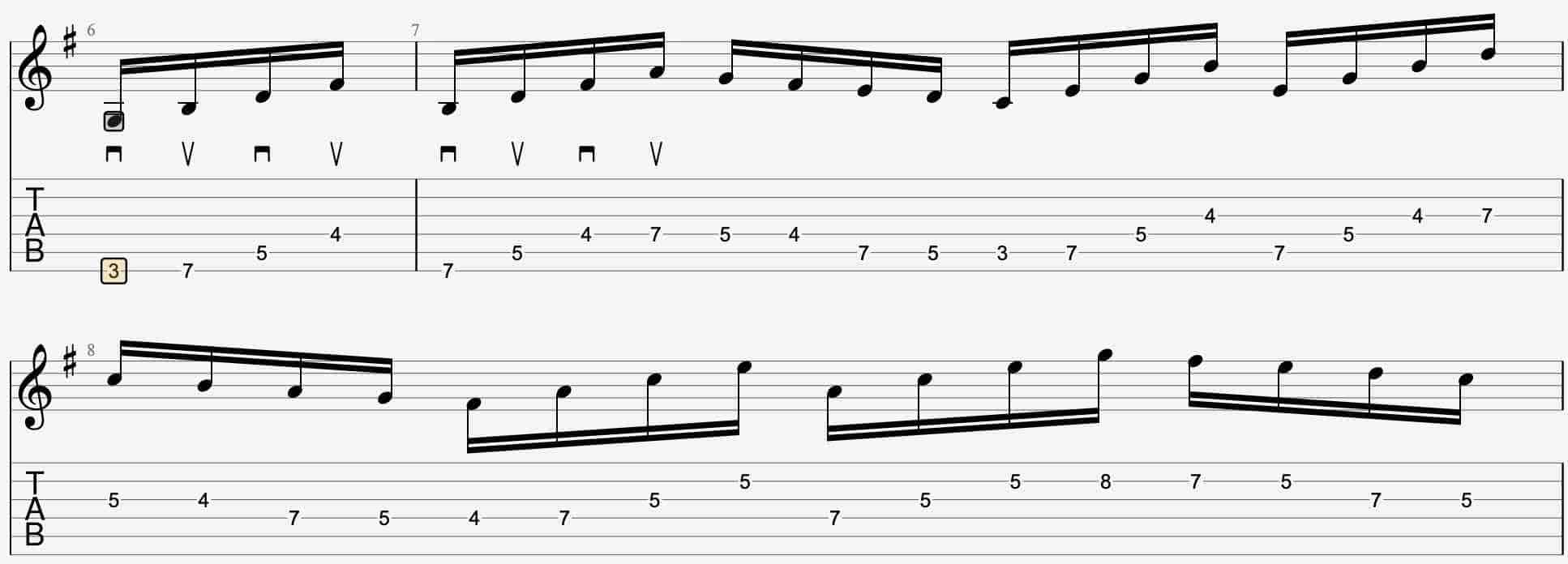

Legato - Hammer-ons and Pull-offs
Alternate picking on its own is fine but we don’t want to leave that fretting hand out. In this example, we’re only picking the first note on each string, hammering the remaining notes with the fretting hand fingers.
The pick in this case is used more to push off the left hand notes creating just enough sound to start the sequence on each string. When descending the pattern is reversed and you’ll pull off the notes. Remember when pulling off to plant the fretting hand before picking the first note.
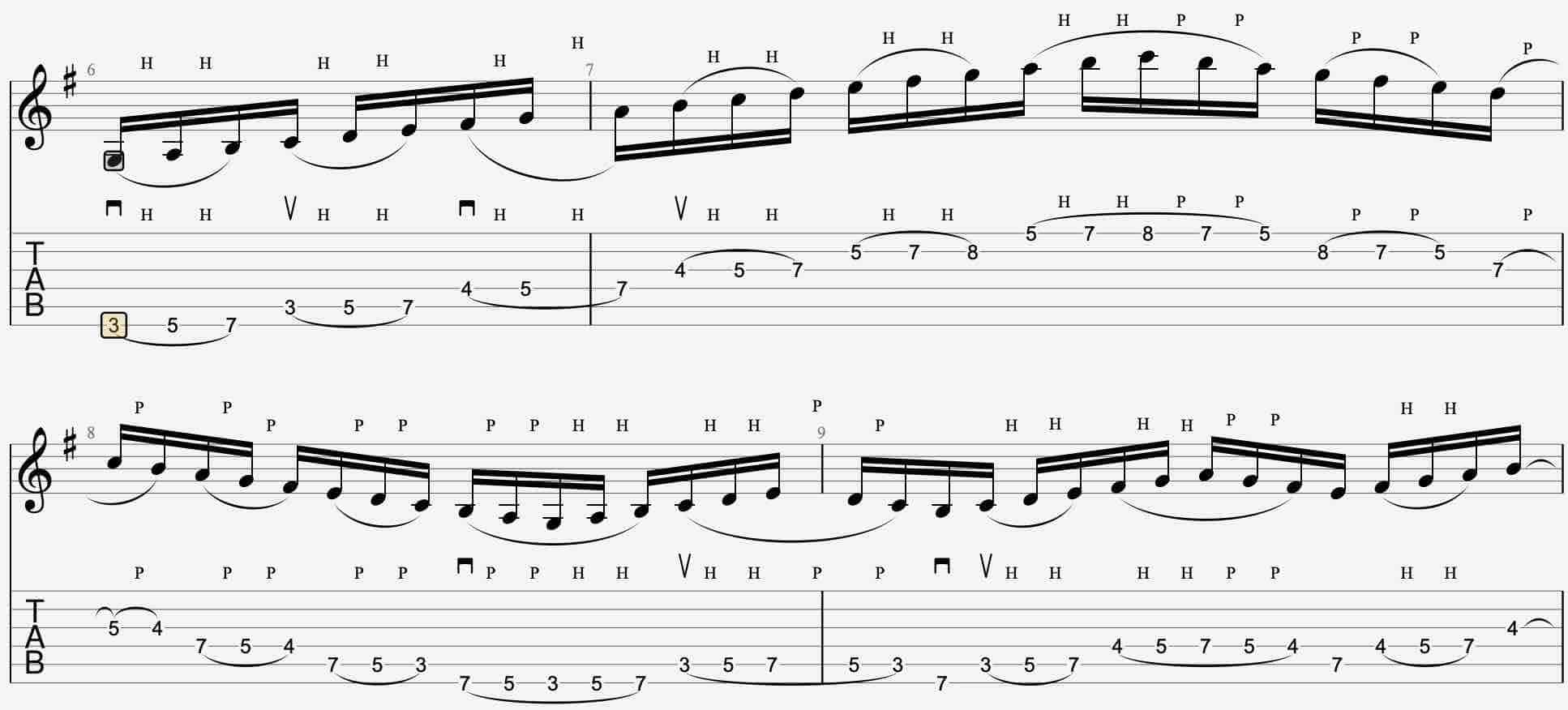
Some thoughts on Legato Guitar Playing.
"Somewhere along the line, guitarists started using the term ‘Legato’ when referring to anything having to do with slurs, hammers, tapping, or pull-offs. The fact is, these guitar techniques have little to do with what legato truly means. At a certain speed threshold, legato becomes almost indiscernible anyways.
You can play legato with or without a pick, while tapping, finger-picking, or any other guitar technique. It is the space (or lack thereof) between the notes that determine whether a piece of music is Legato (run together without space) or Staccato (choppy, with space)."

'Double' Legato String Pairs
In this next example we will attempt to play in a legato style by letting the notes ring into each other without any space between. Each pair of adjacent strings creates a nice long line that can be wound up ascending through the scale shape.
Practice this one slowly and pay close attention to your alternate picking when crossing strings.
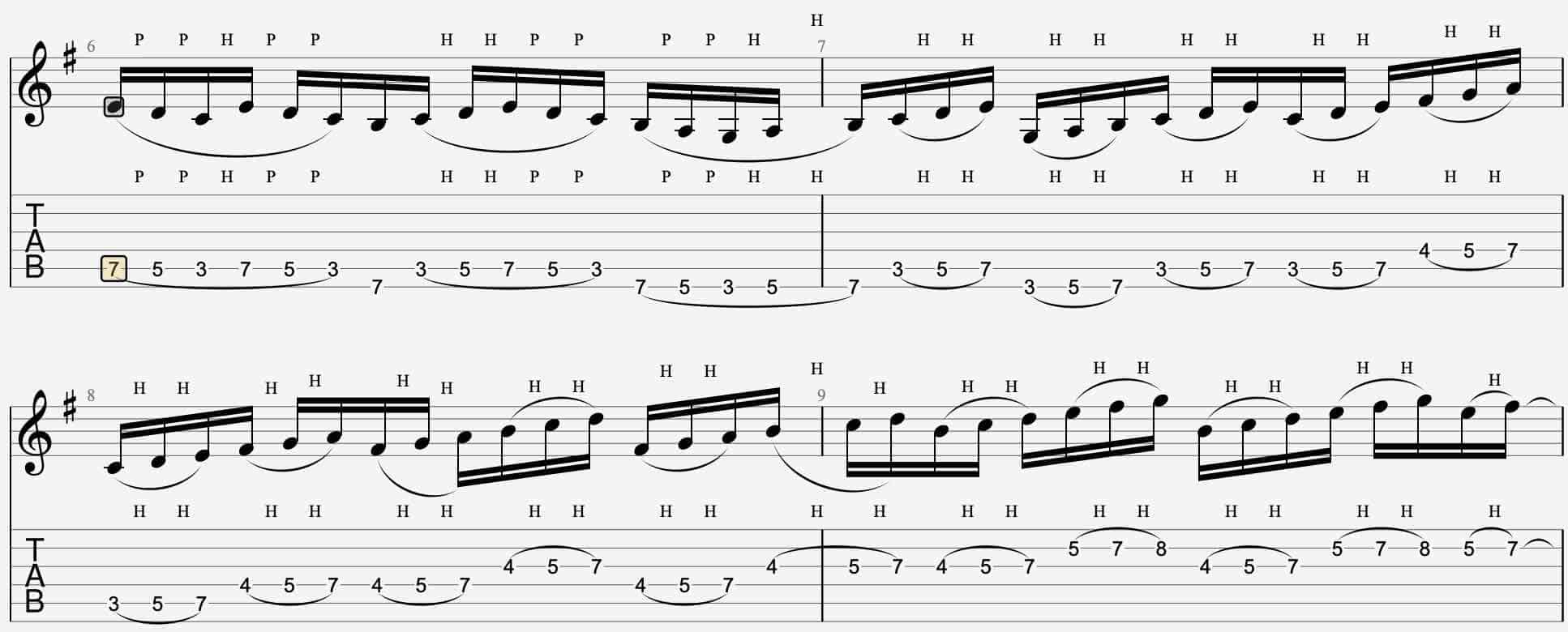

Alternate Picking Triplets
You may have noticed on the sheet music, there is a break where the triplet section starts. There are 2 ways you can approach this depending on your skill level.
If you’re comfortable playing 16th note picking patterns at around 100 BPM, you may feel better slowing the triplet section down about 25%, or around 75 BPM.
Alternatively you could just shred your way though this at full speed! Whatever works for you. Whichever you choose, use a metronome and keep your timing together throughout.
Playing in 3/4 or 6/8 is different than playing triplets in 4/4 time. Pay attention to the number of notes you see in each measure. Avoid the TAB if possible and adjust your eyes to the rhythmic values of the notes in the standard notation on top.
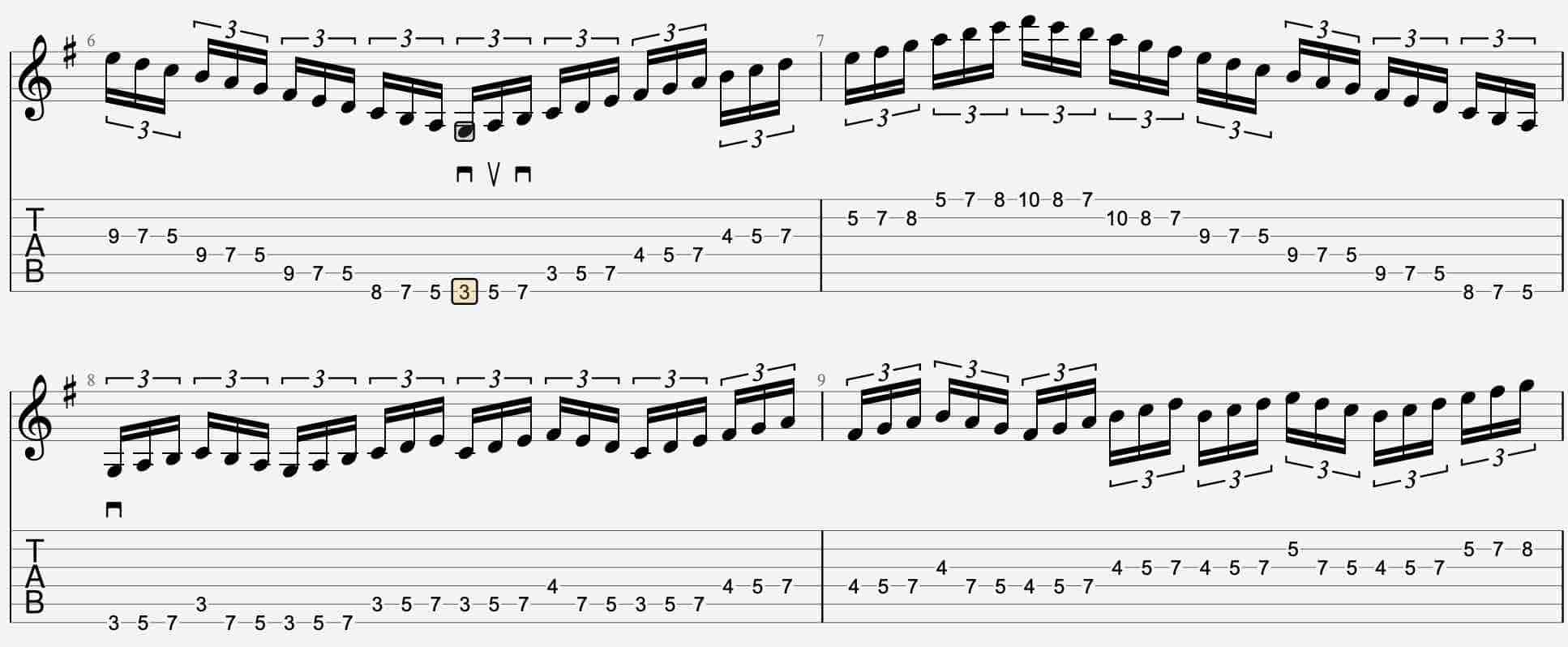
Ideally when you’re comfortable, switching between 16th notes and faster double triplets is a great tool for improvisation. Triplets can add a lot of spice to your solos in any style of guitar music.
I’ve include only an excerpt above. In 'The Ultimate Picking Exercise’ PDF, you’ll see there are a few variations of triplets included. I prefer practicing triplets ascending in one mode (Ionian) and descending in the next higher adjacent mode (Dorian) in order to keep the time and picking consistent. I’ve included that example as well. Enjoy!

Pedal Points
In Classical music, a pedal point is a sustained note, often in the bass, during which at least one additional diatonic note or harmony is sounded in succession. There are several types of pedal points including Internal and inverted Pedal Points.
Blah, blah, blah, who cares right? They make amazing alternate picking exercises for guitarists!
For this alternate picking finalé, we’ll be dealing mostly with Internal and Inverted pedal points; those which travel in both directions, using both bass notes and high repeating scale tones.
Pedal Points can take some time to get used to and can be quite difficult for even the most advanced guitarists. I saved this one for last for that very reason.
Note: As with the triplet example, the full PDF includes more pedal point variations.
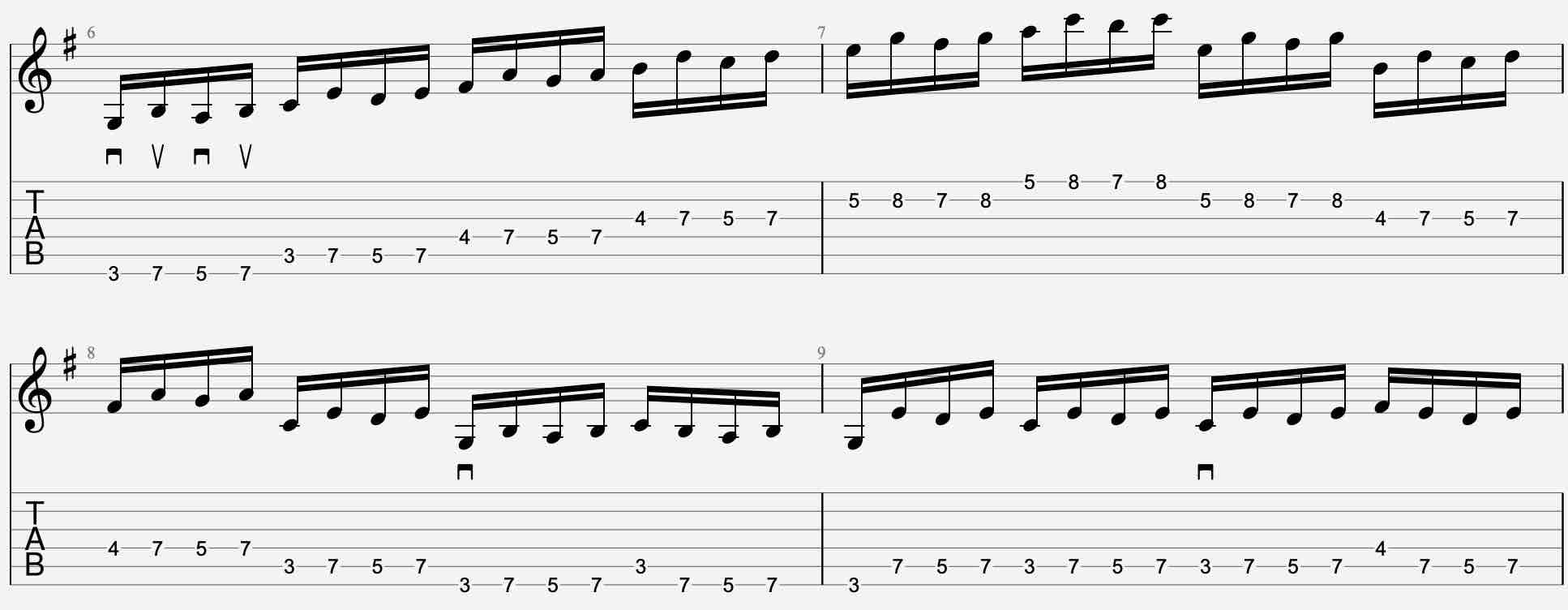

Wide Interval Pedal Points
Alternate picking pedal points on guitar presents some unique challenges. String skipping with outside picking, being chief among them.
There are other ways to pick this descending pedal point sequence. You could hybrid pick it ala Eric Johnson for example.
Since this is an alternate picking exercise, let's stick to the meat and potatoes here. Alternate picking using 'outside' picking.
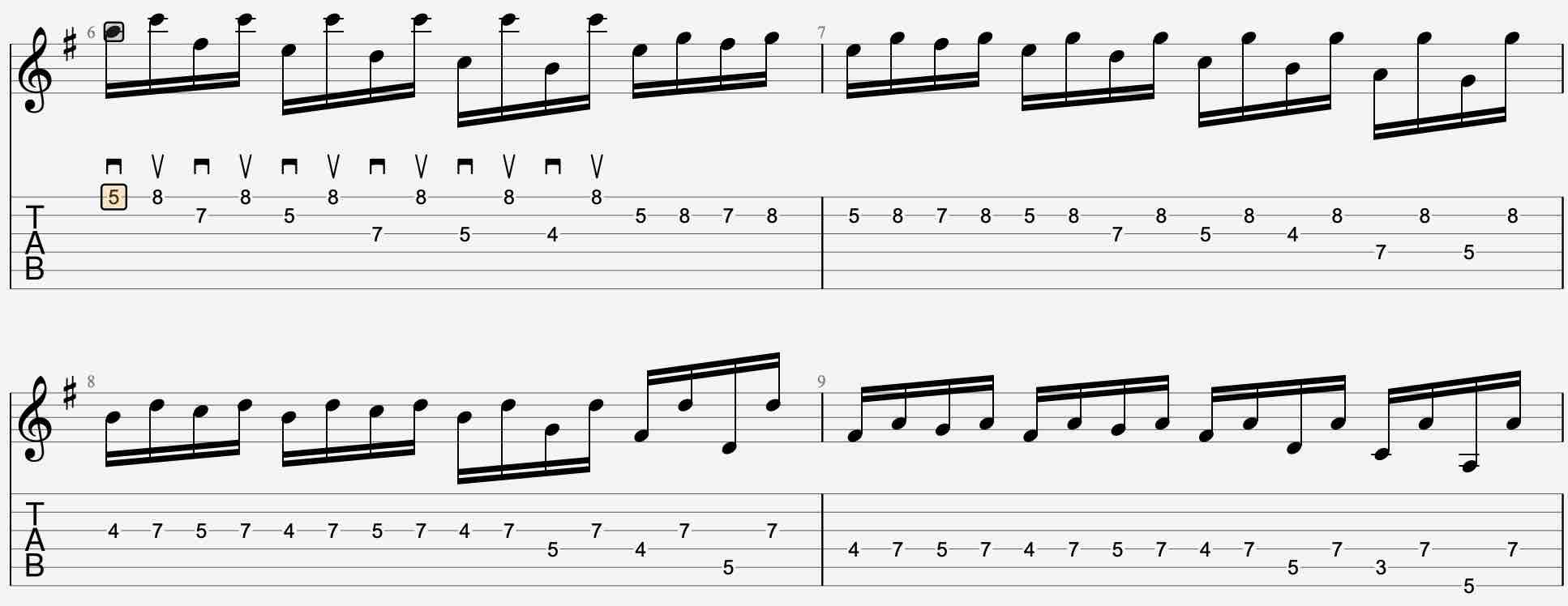
Picking Practice Tips
Do
don't
ConClusion
So that’s all folks! My ultimate alternate picking exercise for guitarists. Here’s the 7 page PDF download. Keep in mind, if you're on my email list you can also get the full audio and Guitar Pro files in the Guitar Printables free members area.
Download the 7 Page PDF
'The whole Enchilada'
Craig Smith
Craig is a Professional Guitarist, Writer, and Blogger in Sanford, Florida.
After teaching and performing guitar for over 25 years he started www.Lifein12Keys.com as an online outlet for his writing passion.
When he’s not playing guitar, skateboarding, or arguing with you about why vinyl records sound better than CDs, you may find him by the pool with his wife Celeste, 4 Chihuahuas, and a drink.

Craig Smith is a professional Guitarist, Teacher, and Writer living in Sanford, Florida. Craig has taught guitar lessons, performed 200+ gigs per year for nearly 30 years, and published 4 guitar instructional books. When he’s not gigging or writing, you may find him by the pool with his wife Celeste, 4 Chihuahuas, and a drink. 🎸
